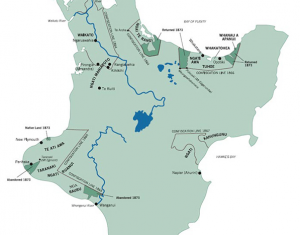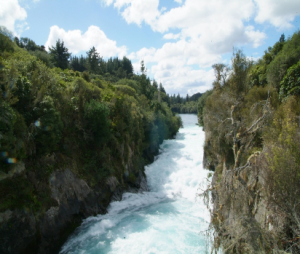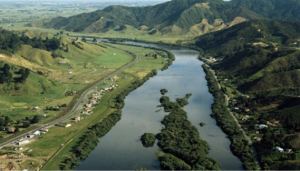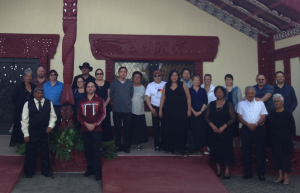Maori
Aotearoa (New Zealand)
The Waikato-Tainui is the fourth largest Iwi (tribe) of Maori in New Zealand. They have 64,500 members in 68 marae (communities), affiliated with 33 hapuu (sub-tribes). The Maori have a two-part governance structure. The first tier is a Tribal Parliament, that comprises three members (namely a youth, an adult, and an elder) from all 68 communities; the Tribal Parliament is composed of over 200 people. The second tier is the Executive Board, which makes daily decisions for the tribes. The members of the Executive Board are elected from the Tribal Parliament. Besides these two tiers of governance, the Maori have various smaller boards that deal with commercial, environmental, and social issues, among others.
History (Since Colonialism)

Since 1884, when the Maori King Kiingi Taawhiao attempted to obtain an audience from Queen Victoria on his deputation to England, the Maori have been involved in a long process of seeking redress from the government for the loss of their lands. In 1927, the Royal Commission published the Sim Report, which concluded that the government’s confiscation of the land was excessive. Thus, the government of New Zealand passed the Waikato-Maniapoto Maori Claims Settlement Act 1946, which compensated the Maori both in money and in land for the territory that was confiscated from them 83 years prior. The Maori were returned some of their land in 1995.


“[T]he Waikato River is a tupuna (ancestor) which has mana (prestige) and in turn represents the mana and mauri (life force) of the tribe. The River has its own mauri, its own spiritual energy and its own powerful identity. It is a single indivisible being.”
-Waikato-Tainui Raupatu Claims (Waikato River) Settlement Act 2010
Waikato River

The Waikato River is the longest river in New Zealand, spanning 425 kilometres. The Waikato-Tainui are one of a few tribes that live along the River. The Waikato-Tainui have a very deep connection with the River, who they consider an ancestor with its own life force. Historically, Waikato-Tainui ancestors had used this River for trade, for recreational activities, and for food procurement. Many of these same activities occur presently, along with other activities, making this River a heavily used waterway. It has eight dams for the production of energy and is used for waste discharge. Its lakes are also experiencing degradation.

In 2010, as part of the process of redress, the Waikato-Tainui Raupatu Claims (Waikato River) Settlement Act 2010 was passed. As explained Huriwai Paki and Ashleigh Turner (Waikato-Tainui) at the 2015 CICADA conference, the overarching purpose of the settlement was to “restore and protect the health and well-being of the river for future generations.” Two core principles emerged from the settlement. First, the settlement recognizes the River as the Waikato-Tainui’s ancestor (Mana o te awa: Tuupuna awa). The settlement reads: “To Waikato-Tainui, the Waikato River is a tupuna (ancestor) which has mana (prestige) and in turn represents the mana and mauri (life force) of the tribe. The River has its own mauri, its own spiritual energy and its own powerful identity. It is a single indivisible being.” This recognition of the personhood of the River, however, does not grant it the status of personhood, and thus the River is not legally protected as such. The Whanganui River, on the other hand, received legal personhood status in 2012 in New Zealand. Second, the settlement recognizes the Waikato-Tainui as the caregivers of the River (Mana whakahaere). Three principal mechanisms also emerged from the settlement: 11 ministerial accords and four joint-management agreements with Council; the Waikato River Authority; and the Waikato Raupatu River Trust.

The Waikato River Authority is responsible for implementing the Vision and Strategy for the River. It administers funds in order to restore the full length of the River. The Waikato Raupatu River Trust, the body for which CICADA indigenous partners Huriwai Paki and Ashleigh Turner both work, is responsible for restoring the Waikato-Tainui tribe’s section of the River. After five years into the settlement, the Waikato Raupatu River Trust has achieved quite a lot. They are pursuing ongoing restoration projects, such as eradicating the koi carp in their River, which is its dominant biomass and which is considered an invasive pest. Moreover, they are engaged with Waikato-Tainui youth to teach them about the importance of their section of the River. Finally, they currently are involved in two investments that look to deliver on their environmental aspirations and that seek some form of economic return.

One of the Waikato Raupatu River Trust’s main challenges is that their co-management fund runs out in 2040. As such, they are seeking innovative means of continuing to receive financial resources so that they can fund other projects after that point. They are involved in the Indigenous Confluence: the Role of Indigenous Knowledge in River Restoration and Sustainable Futures project in order to engage in knowledge production and sharing with other indigenous communities. This partnership was inspired by the longest-standing Maori Queen Te Arikinui Te Atairangikaahu, who said “Draw strength from our partnerships.”
Associated Projects
Indigenous Confluence: the Role of Indigenous Knowledge in River Restoration and Sustainable Futures

